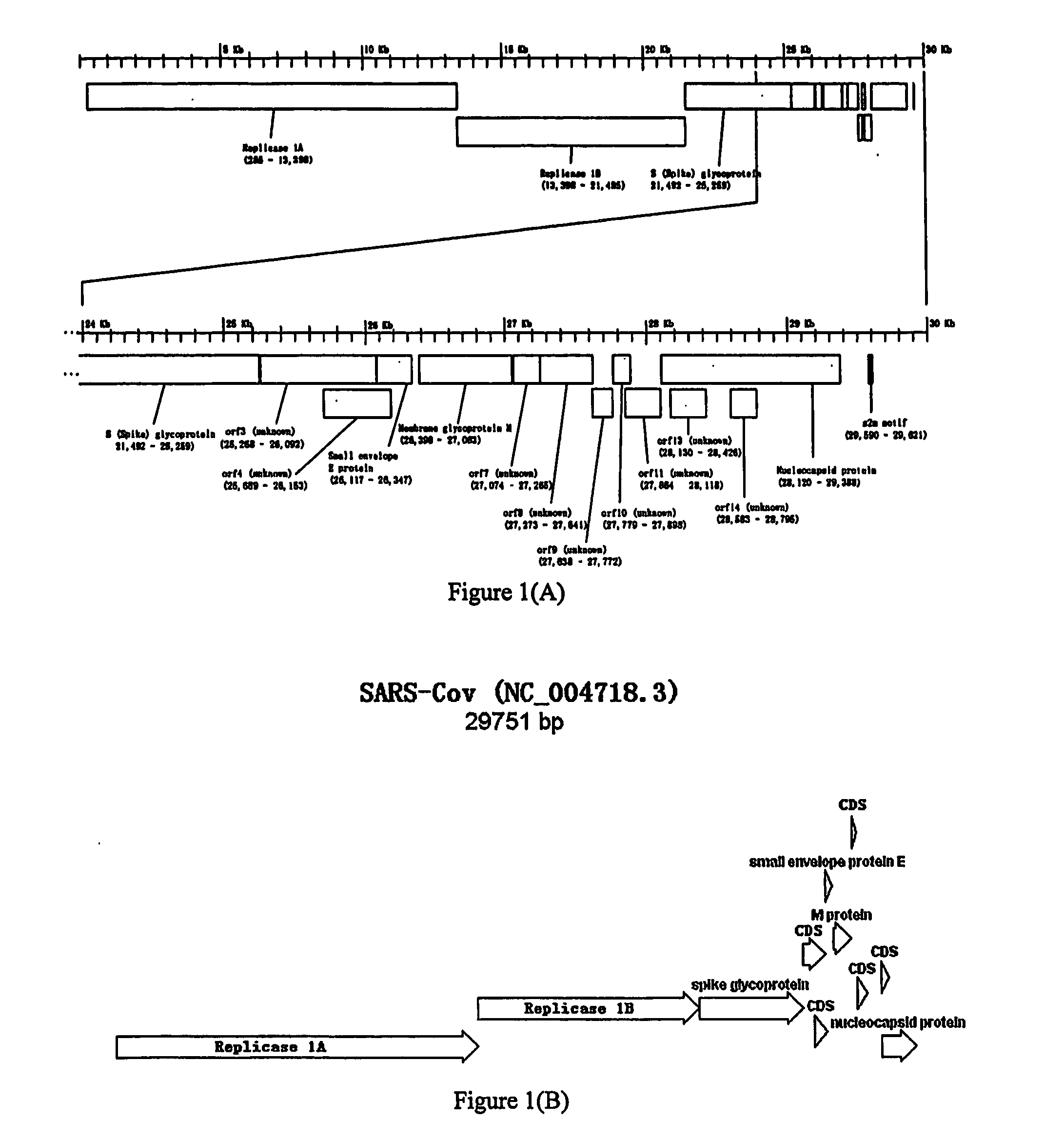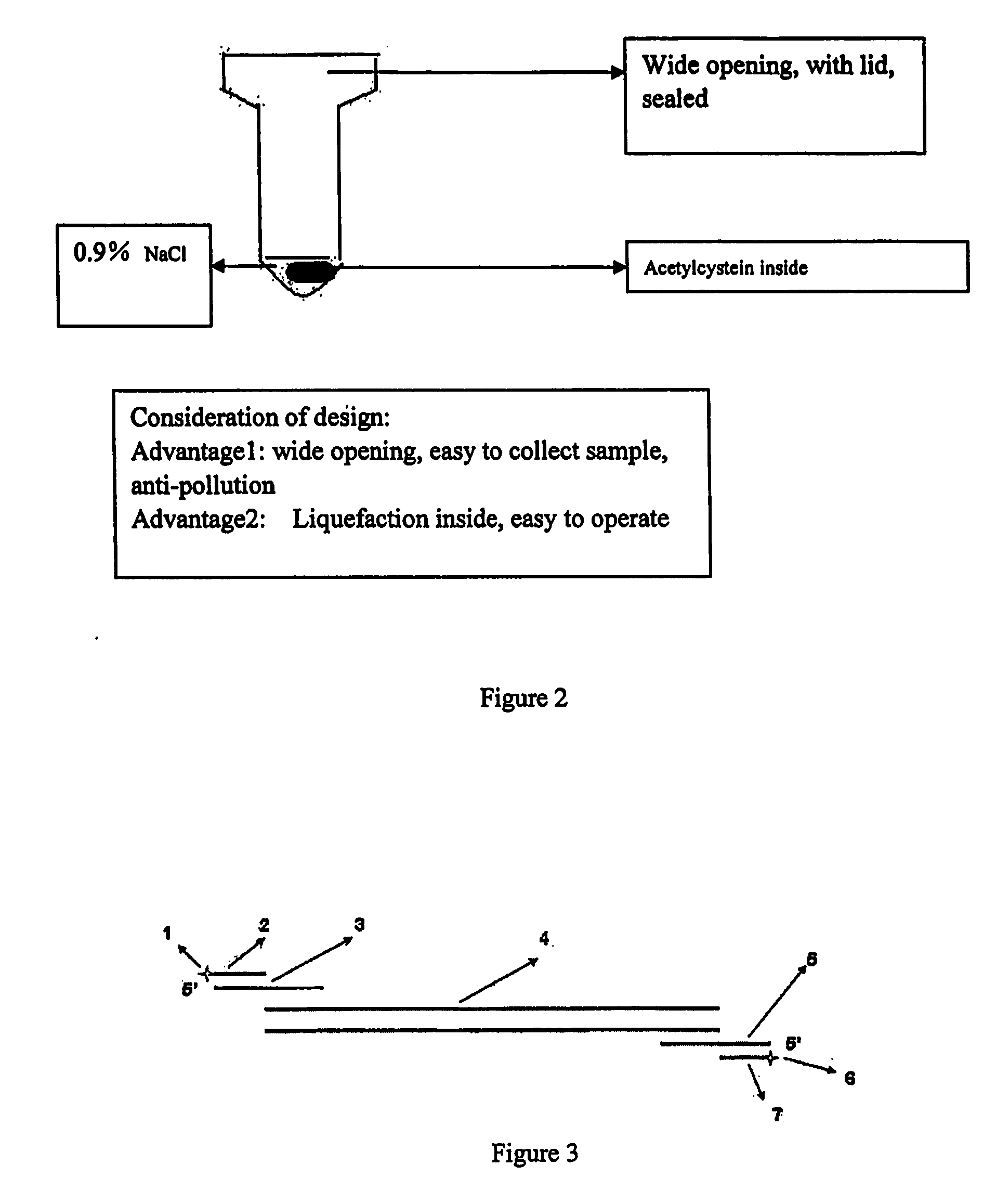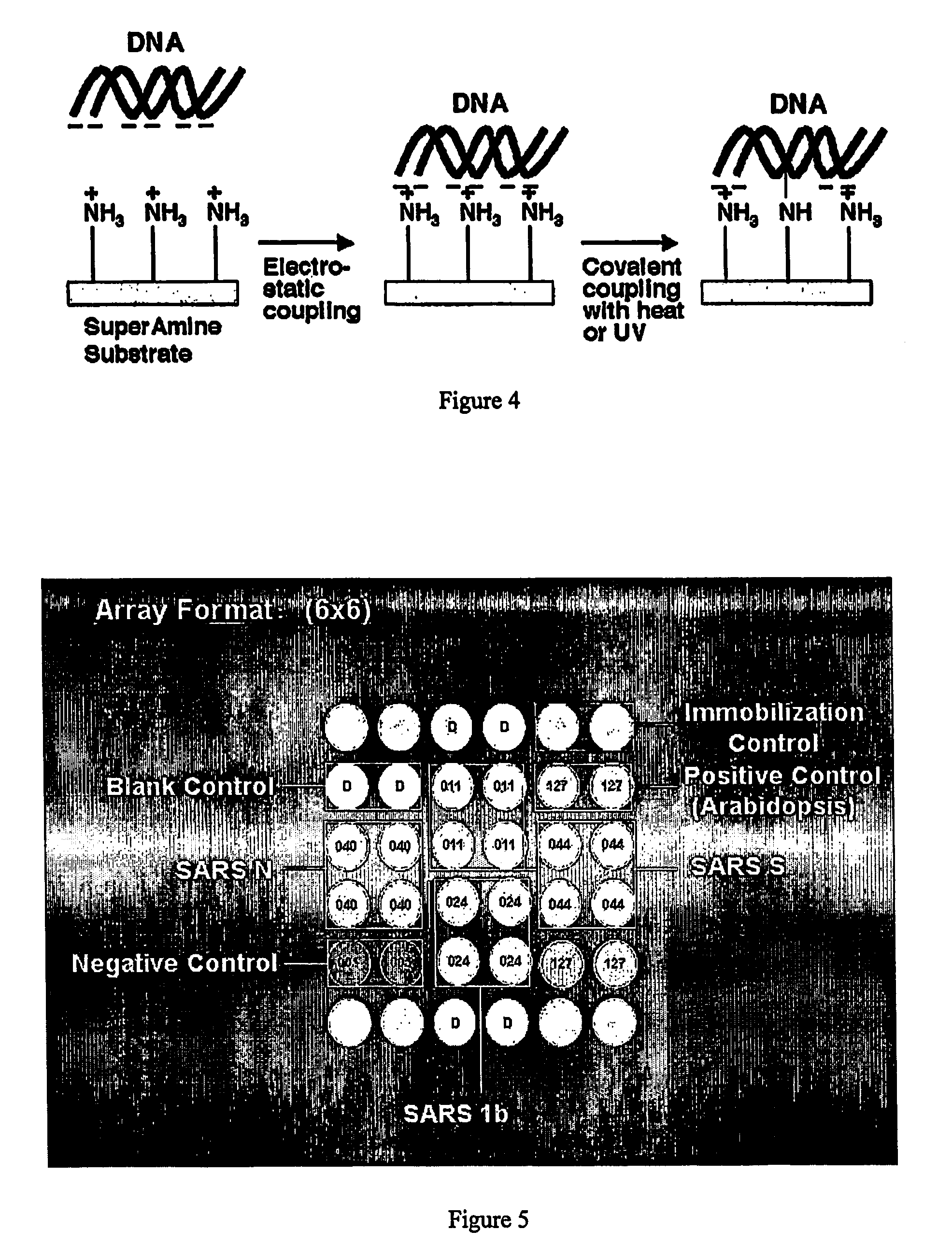Methods and compositions for detecting sars virus and other infectious agents
a technology of sars virus and composition, which is applied in the field of methods and compositions for detecting sars virus and other infectious agents, can solve problems such as problematic diagnosis of sars only based on the symptoms of the patient, and achieve the effect of specificity of amplification and efficient incorporation into the amplicon
- Summary
- Abstract
- Description
- Claims
- Application Information
AI Technical Summary
Benefits of technology
Problems solved by technology
Method used
Image
Examples
example 1
Probe Designs
[0174] Various genome sequences of SARS-CoV are available (See e.g., Table 22).
TABLE 22Genome sequences of SARS coronaviruse currently obtained (as ofMay 2, 2003)NumberSource ofSubmittingof N inLengthSARSCountryGenBanktheof thePercentageIDcoronaviruse(Area)Accsequencegenomeof NSARS_BJ01Beijing,ChinaAY278488900289203.11%ChinaSARS_BJ02Beijing,ChinaAY278487300294301.02%ChinaSARS_BJ03Beijing,ChinaAY278490607292912.07%ChinaSARS_GZ01Guangzhou,ChinaAY2784891007294293.42%ChinaSARS_BJ04Beijing,ChinaAY27935425022477410.10%ChinaSARS_CUHK-Hong Kong,HongAY2785540297360.00%W1ChinaKong,ChinaSARS_HKU-Hong Kong,HongAY2784910297420.00%39849ChinaKong,ChinaSARS_UrbaniVietnamU.S.AY2787410297270.00%SARS_TOR2Toronto,CanadaAY2741190297360.00%Canada
The sizes of the nine genomes shown in Table 22 are very similar. The five genomes submitted by China contain various levels of unidentified nucleotides (N).
[0175] The following Table 23 shows similarities or homologies among the nine 5 genomes o...
example 2
Process for Pretreatment of Blood Sample
[0183] Pretreatment of blood sample involves relatively complicated processes. However, considering the relative low concentration SARS virus in serum reported, pretreatment described herein can effectively enrich lymphocytes from about 2 ml of the whole blood in order to increase the chances of detection.
1. Sample Collection and Transfer
[0184] 1) Samples collected from patients in the hospital room are put in a first transfer window. The door of the window is then closed and locked.
[0185] 2) The samples are then transferred into a second transfer window. The samples are recorded in a notebook and three bar code labels are printed. The samples are tested for conventional detection and transferred into a pretreatment transfer window.
2. Use of Biosafe Cabinet
[0186] 1) Hospital personnel for performing pretreatment process enters the pretreatment room and close the door. The biosafe cabinet is then turned on. The fan of the cabinet and li...
example 3
Process for Extracting RNA Using QIAamp Viral RNA Kit
[0211] The following procedures are used in RNA preparation:
[0212] 1. Pipet 560 μl of prepared Buffer AVL containing Carrier RNA into a 1.5-ml microcentrifuge tube. If the sample volume is larger than 140 μl, increase the amount of Buffer AVL / Carrier RNA proportionally (e.g., a 280-μl sample will require 1120 μl Buffer AVL / Carrier RNA).
[0213] 2. Add 140 μl plasma, serum, urine, cell-culture supernatant, or cell-free body fluid to the Buffer AVL / Carrier RNA in the microcentrifuge tube. Mix by pulse-vortexing for 15 sec. To ensure efficient lysis, it is essential that the sample is mixed thoroughly with Buffer AVL to yield a homogeneous solution. Frozen samples that have only been thawed once can also be used.
[0214] 3. Incubate at room temperature (15-25° C.) for 10 min. Viral particle lysis is complete after lysis for 10 min at room temperature. Longer incubation times have no effect on the yield or quality of the purified RNA....
PUM
| Property | Measurement | Unit |
|---|---|---|
| Fraction | aaaaa | aaaaa |
| Time | aaaaa | aaaaa |
| Time | aaaaa | aaaaa |
Abstract
Description
Claims
Application Information
 Login to View More
Login to View More - R&D
- Intellectual Property
- Life Sciences
- Materials
- Tech Scout
- Unparalleled Data Quality
- Higher Quality Content
- 60% Fewer Hallucinations
Browse by: Latest US Patents, China's latest patents, Technical Efficacy Thesaurus, Application Domain, Technology Topic, Popular Technical Reports.
© 2025 PatSnap. All rights reserved.Legal|Privacy policy|Modern Slavery Act Transparency Statement|Sitemap|About US| Contact US: help@patsnap.com



